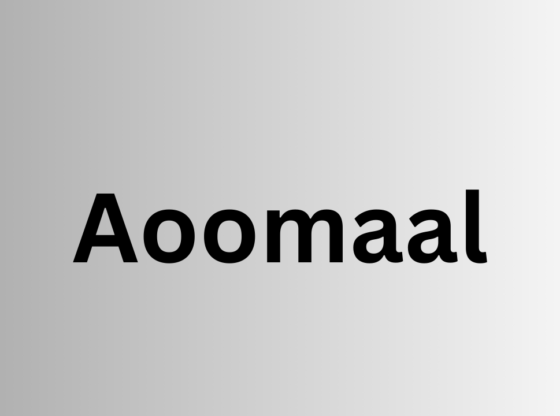Aoomaal is a term that may not be widely recognized in mainstream discourse but holds significant meaning in specific contexts. This article delves into the origins, meanings, and applications of aoomaal, exploring its cultural, social, and perhaps even economic implications. Whether aoomaal is a concept, a practice, or an artifact, it invites a deeper understanding and appreciation.
Origins and Etymology
The origins of the term “aoomaal” are shrouded in mystery, with few historical records or linguistic roots readily available. It may stem from an ancient language, a dialect, or a specific cultural practice. To fully appreciate its significance, it’s essential to consider the various ways in which it might have been used or understood throughout history.
Potential Linguistic Roots
- Ancient Languages: Aoomaal might trace back to ancient civilizations, where it could have had a specific meaning related to everyday life, spirituality, or community practices.
- Dialects: In certain regions, aoomaal could be part of a local dialect, imbued with cultural significance unique to that area.
- Evolution of Language: Like many words, aoomaal could have evolved over time, with its meaning shifting as societies and languages developed.
Cultural Significance
Aoomaal, whether a concept or a tangible entity, likely plays a crucial role in the culture from which it originates. Understanding its cultural significance can shed light on its broader implications.
Practices and Traditions
- Rituals: If aoomaal is associated with rituals, it could be central to religious or spiritual ceremonies, symbolizing various beliefs or deities.
- Festivals: In some cultures, aoomaal might be celebrated during festivals, representing themes of harvest, prosperity, or renewal.
- Daily Life: Aoomaal could be part of daily practices, perhaps related to food preparation, craft, or social gatherings.
Symbolism
- Symbol of Prosperity: In certain contexts, aoomaal might symbolize wealth, abundance, or good fortune.
- Spiritual Emblem: It could represent spiritual ideals, embodying virtues like purity, wisdom, or resilience.
- Community Bond: Aoomaal might also serve as a symbol of community and unity, bringing people together through shared practices or beliefs.
Economic Implications
If aoomaal has a tangible aspect, such as being a product or a commodity, it could have significant economic implications. This section explores the potential economic impact of aoomaal.
Also Read: André Hakkak’s Wife Marissa Shipman
Trade and Commerce
- Local Economy: Aoomaal might be a product traded within local markets, contributing to the local economy and sustaining livelihoods.
- Export: If aoomaal is unique and valued beyond its origin, it could become an export commodity, influencing trade relations and economic growth.
Production and Craftsmanship
- Artisan Craft: The production of aoomaal might involve skilled artisans, preserving traditional craftsmanship and techniques.
- Industrial Production: Alternatively, if it has gained popularity, it could be produced on an industrial scale, affecting manufacturing practices and employment.
Social Impact
The social impact of it can be profound, influencing various aspects of community life and individual identity.
Identity and Heritage
- Cultural Identity: Aoomaal might be a source of cultural pride, embodying the heritage and traditions of a community.
- Personal Identity: For individuals, it could hold personal significance, representing family traditions or personal beliefs.
Social Structures
- Community Cohesion: Through shared practices and values, aoomaal might strengthen community bonds and foster a sense of belonging.
- Social Hierarchies: In some cultures, the possession or knowledge of aoomaal might influence social status or hierarchy.
Conclusion
Aoomaal, though not widely known, represents a rich tapestry of cultural, social, and economic threads. Its origins may be ancient, its significance profound, and its impact far-reaching. By exploring it, we uncover a deeper understanding of the cultures and communities that cherish it and appreciate the diverse ways in which human societies find meaning and connection. Whether aoomaal is a concept, a practice, or an artifact, it stands as a testament to the complexity and beauty of human culture.
Also read: What Century Are We In?
FAQs
What is aoomaal?
Aoomaal is a term that may refer to a unique cultural concept, practice, or artifact. Its exact meaning and significance can vary depending on the context and the culture from which it originates.
Where does the term aoomaal come from?
The origins of Aoomaal are not well documented. It may stem from an ancient language, a specific dialect, or cultural traditions unique to a particular region.
What is the cultural significance of Aoomaal?
It can hold significant cultural value, possibly being central to rituals, festivals, or daily practices. It may symbolize prosperity, spiritual ideals, or community unity.
How does it impact the economy?
If Aoomaal is a tangible product, it could influence local and export markets. It may support local economies through trade and craftsmanship, or it may be produced on an industrial scale, affecting manufacturing and employment.
What is the social impact of Aoomaal?
It can strengthen community bonds and cultural identity. It may influence social structures and hierarchies, with its possession or knowledge potentially affecting social status.
Is Aoomaal associated with any specific traditions or rituals?
It might be involved in various traditions or rituals, depending on its cultural context. It could play a role in religious ceremonies, festivals, or everyday cultural practices.
Can aoomaal be considered a symbol?
Yes, It can symbolize various concepts, such as prosperity, spiritual ideals, or community cohesion, depending on its cultural and social context.


